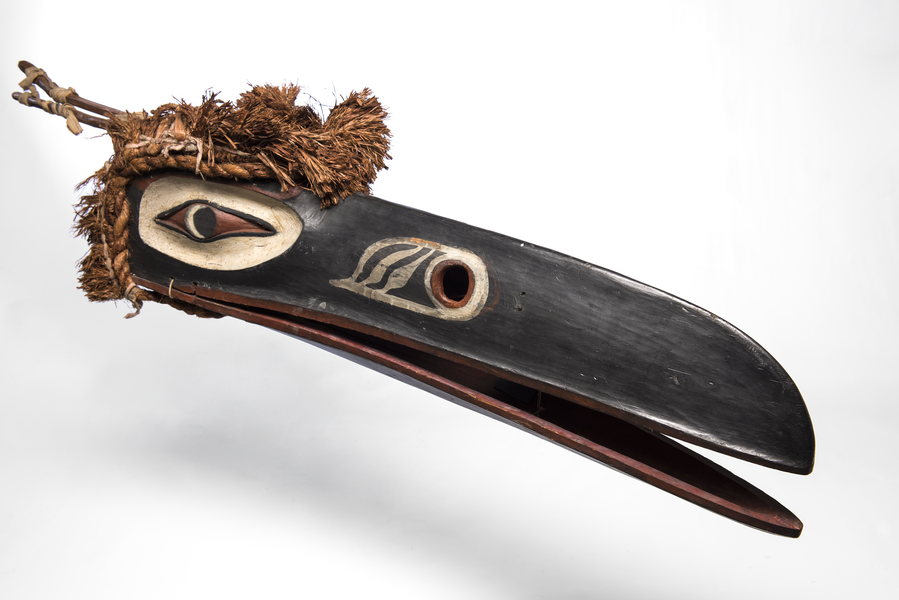The Museum’s connections with the Americas are long-standing, and have produced many weird and wonderful stories as well as treasures of cultural and natural history.
In 1910, a group of Indigenous Canadian performers was brought to Australia for a Wild West-style show. When the venture failed, their costumes and artefacts were sold to help fund their return to Canada. A dealer sold this collection to the Museum in 1912, including the large raven head mask hanging in this showcase.
Along with the other items in the collection, this mask was made for traditional ceremonial use at a time when the Canadian government was trying to stamp out indigenous practices.
More recently, the mask’s sad story of cultural dispossession received a more hopeful chapter. In 1987, the Museum began working with the Canadian Museum of History and the Kwa-guilth people of Canada’s west coast to repatriate some of these rare artefacts. In return, the Museum received several new objects commissioned from contemporary Kwa-guilth artists Calvin and Richard Hunt. These included the colourful mask on the bottom left, known as an echo mask. Echo masks have interchangeable mouthpieces to allow the wearer to transform into different creatures during a ceremonial dance.
At the rear of the showcase, a polished slice of jasperised wood is a North American treasure of a different sort. Created by a process of natural transformation, it comes from the Petrified Forest National Park in northeast Arizona. Now semi-arid and almost treeless, about 225 million years ago the area was covered in a forest of tall conifers. Periodically, fallen trees were buried in volcanic ash, protecting the wood from the air. Groundwater dissolved silica from the ash and carried it into the wood, where it formed crystals that replaced the cellulose cell by cell. Traces of iron oxide and other minerals combined with the silica to create the wood’s varied colours.

